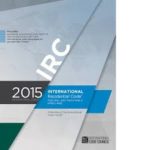Today I want to talk about the details and specifics of when you can use an ignition barrier for spray foam insulation or foam plastic materials in accordance with the building code.
This topic comes up all the time, I get questions from homeowners, builders, architects, contractors, and SPF applicators on a regular basis about this topic.
We know the building code starts by requiring thermal barriers for all foam plastic insulation, but there are several exceptions to the thermal barrier requirement. The one exception that we deal with the most is Attics and Crawlspaces.
Both the IRC and IBC say, when access to the attic or crawl space is limited to the service of utilities an ignition barrier is acceptable fire protection over foam.
Basically the code is saying that if the only reason to go into the attic or crawl space in question is servicing the utility, such as working on the HVAC system, working on a light bulb, working on wires, etc., if the only purpose for going into the attic or crawl space is the service of utilities, then an ignition barrier is an acceptable form of fire protection for all foam plastic in that space.
The code says that under these circumstances the foam plastic insulation must be covered in such a way that it is not exposed to the attic by an ignition barrier material and the code describes several specific ignition barrier materials.
The code then goes on to provide exceptions and directs us to the special approval section of the code which allows us to do special tests, like the Appendix X test, which is how we get many spray foam products approved without any additional fire protection, because the spray foam products pass a large-scale test.
As soon as access goes beyond service of utilities, such as an attic used for storage, then an ignition barrier is not sufficient and a thermal barrier is required. What happens is that the attic section of the code no longer applies, you don’t get to use the attic and crawl space exception to the thermal barrier requirement, so a thermal barrier would be required.
You would have to use half inch gypsum board as the prescribed thermal barrier or a material that allows you to omit the thermal barrier requirements such as an intumescent coating system that passes the interior finish test requirements.
This is Robert Naini, your Spray Foam Advisor, and the guy in the Hawaiian shirt, thanks for checking me out and catch me on some more videos.



